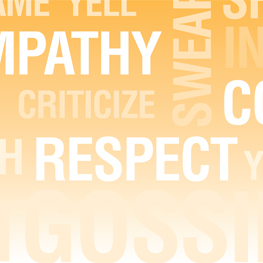Bullying continues to haunt children throughout our country’s communities and schools. But what do you do if you find out your child is a bully?
 First, “try not to be defensive,” says Kursten Euwer, a school counselor for a Kindergarten to Eighth Grade private school, which implemented a comprehensive and proactive anti-bullying campaign two years ago. “Take it as a teaching opportunity. Parents need to talk about this openly and honestly at home. Try to get to the root of what’s going on.”
First, “try not to be defensive,” says Kursten Euwer, a school counselor for a Kindergarten to Eighth Grade private school, which implemented a comprehensive and proactive anti-bullying campaign two years ago. “Take it as a teaching opportunity. Parents need to talk about this openly and honestly at home. Try to get to the root of what’s going on.”
Who bullies?
For years, people believed that kids who bullied suffered from low self-esteem. “Instead, researchers are finding that some of these children have a very high opinion of themselves; and, in fact, consider themselves ‘above’ the children they are bullying,” says Dianna Hall, LCSW, from the Family Conservancy Agency.
Children who bully may:
• come from a home environment that is not warm and nurturing and where discipline is inconsistent or harsh.
• hang out with friends who bully.
• experience bullying at the hands of a sibling or another family member.
• tend to be impulsive, easily frustrated and have difficulty following rules.
• view violence positively.
Types of bullying
Emotional bullying (intimidation and social alienation), verbal bullying (teasing, name-calling and making offensive remarks) and physical bullying (hitting or destroying another person’s property) traditionally rule school hallways.
These days, insidious cyber-bullying creates even more torment for young victims as damaging and hurtful messages fire through virtual social networks like phone texting, instant messaging, Facebook and Myspace.
“I believe it’s become the number one way for kids to bully each other,” Euwer says, whose school reported zero physical fights last school year. “Kids sit behind that computer screen where they don’t see the person and it’s easier to bully. And everyone sees what’s going on.”
Act immediately
Support the school’s consequences for your child and find appropriate consequences at home that address your child’s inappropriate behavior. “For example, if a child breaks something belonging to another child, they are responsible for replacing or repairing it. For older children, have a clear conversation about retaliation, as in there will be none,” Hall says.
Ask your child questions about the incident to determine what the bullying is about and if others are involved. Avoid “asking ‘why’ (why would you do that?) Questions, [which] only gives the child an opportunity to give excuses for their actions,” Hall says.
Discuss empathy. “Help [your] child understand how the victim feels,” says Dr. Karen Jordan, a child psychologist.
And seek opportunities for your child to practice empathy and kindness. “Something like volunteer work is a good place to start,” Hall says.
Model empathy and respect
Empathy could be our most valuable tool to prevent future bullying. “Children high in empathy are less likely to bully. Teaching kids empathy can start from infancy,” Jordan says. “Infants and young children watch how others, especially their parents, handle their emotions and treat other people. They are also learning about the impact of their behavior on other people.”
Read books together that teach lessons about empathy and use real-life examples to discuss kindness and respect toward others. “With very young children, we can do this by simply pointing out and acknowledging others’ feelings and maybe what could help that person feel better,” Hall says. “Use ‘feelingsoriented’ language. Ask ‘I wonder’ questions related to how they might be able to help someone.”
Create connections in your family to build empathy skills. “Don’t allow bullying or teasing at home between siblings,” Jordan says. “Raising [children] in a nurturing environment where their feelings are validated and respected will help them treat others in the same way.”
A child who lacks empathy will likely enter adulthood without the ability to form genuine connections and relationships with others.
“This oftentimes perpetuates the cycle of violence, leading to adults who do not understand things like ‘no means no.’ Other illegal activities are certainly a likelihood as they usually do not take responsibility for their actions and feel their inappropriateness is completely justified,” Hall says.
Resources – Best on the Web
Check out the following websites:
• www.parentingscience.com/bullying-in-school.html
• www.bullyingcanada.ca
• www.bullying.org
Resources - Best in books
Our experts recommend:
• Best Friends, Worst Enemies by Michael Thompson, Ph.D.
• The Hands Are Not for Hitting series by Martine Agassi, Ph.D.
• Blue Cheese Breath and Stinky Feet: How to Deal with Bullies by Catherine DePino, Ed.D.
• The Bully, the Bullied, and the Bystander by Barbara Coloroso
Author Christa, a wife and mother of two boys, writes frequently about family communication issues.
Calgary’s Child Magazine © 2024 Calgary’s Child